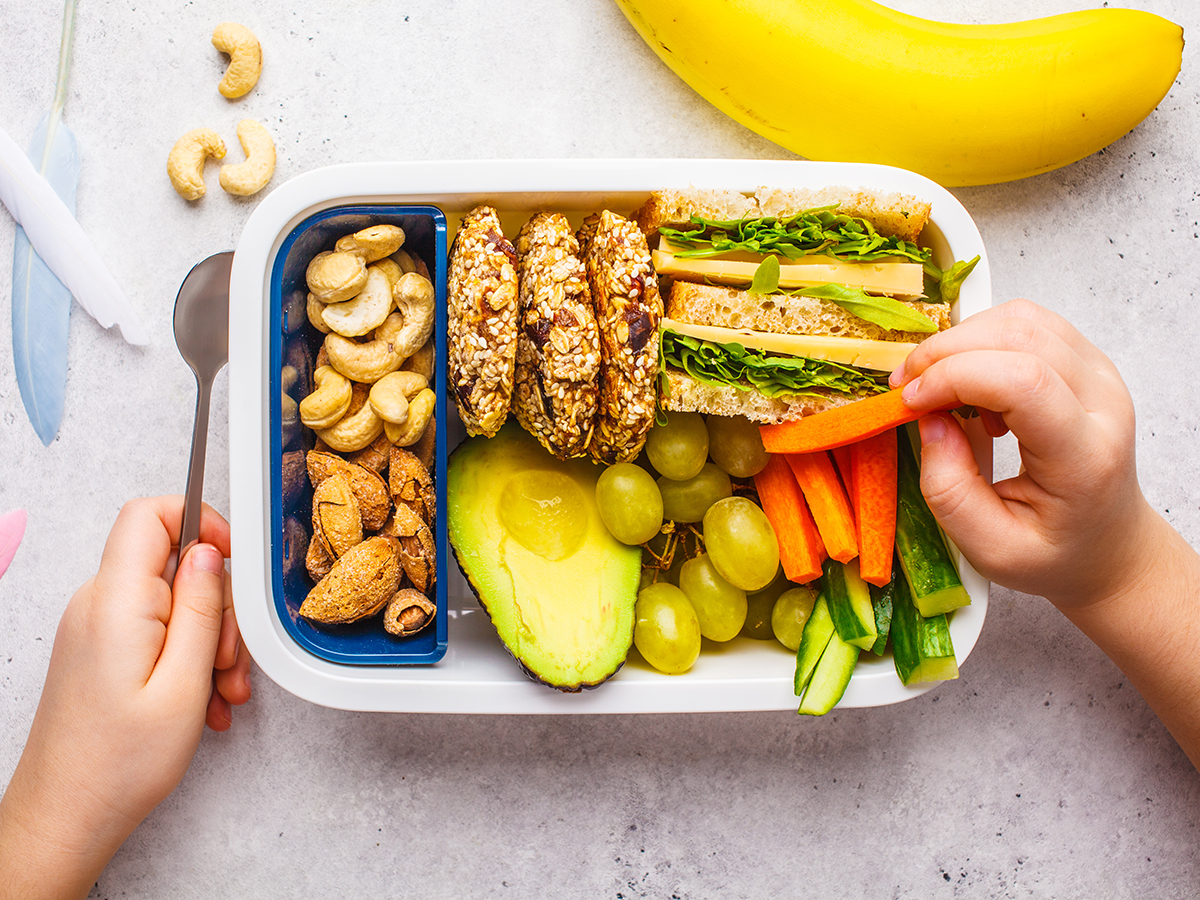

It’s the start of a new year and with the school term approaching, it’s back to packing lunches! For many parents, having the time and resources to prepare nutritious and delicious lunches every morning is a daunting task. This is particularly challenging here in the Top End, where the heat and humidity makes keeping food fresh a very difficult feat. So we have put together our top dietitian tips to help take the guess work out of lunch box preparation! Ditch the guilt and go stress-free with our lunchbox guide below.
1. Include a variety of core foods
Knowing exactly what to put in lunch boxes (that kids will eat) is always a challenge! However, it doesn’t need to be complicated. The key here is to focus on the core food groups, being fruit, veg, dairy, meat/alternatives and grains/cereals. Mixing and matching a range of foods from each of these groups is the best way to ensure a variety of nutrients to support growing kids.
2 serves of fruit
Chopped, whole, peeled or pureed, fruit can be included in a variety of forms. To prevent the age-old problem of chopped fruit going brown, drizzle with lemon juice or encourage kids to eat the fruit whole if possible (e.g. apples or pears).
1-2 serves of veg
Including at least one serve of veg throughout the day is a great way to add extra nutrients and fibre. However, many parents will be familiar with the struggle of vegetable sticks that always seem to be left in lunch boxes at the end of the day. Don’t let this get you down – the key here is to keep offering and encouraging them. Using baby carrots, cucumbers and cherry tomatoes are a great way to save time on chopping and preparation and they can be used again if not eaten. If time permits, adding grated veg to small muffins or fritters can help sneak in some veg for fussy eaters.
1 serve of protein
Adding a protein source is a great way to fill little tummies. This could include meat, eggs, beans, chickpeas, nuts/seeds or tofu. If you opt for meat/eggs, these can easily be added to sandwiches (e.g. sliced chicken/turkey), served plain (e.g. boiled egg) or be in the form of leftovers. However, keep in mind that these need to be kept cool for food safety (see below). If you are wanting a more temperature safe option, nuts/nut spreads (if permitted at the school) are a great way to include protein without having to worry about temperature. If your child’s school doesn’t permit nuts, roasted chickpeas are another great option and can be purchased at your local supermarket in the health food isle.
1 serve of dairy
Dairy is an important source of calcium for children and can be a great lunchbox addition if you are able to keep it cool (see tips below), cheese and yogurt are generally the most lunchbox friendly options! For those with lactose intolerance, opt for lactose free options or coconut yogurt.
2-3 serves of grains/cereals
These are going to be the primary energy source for growing and active kids. Wholemeal bread, wraps, leftover pasta/rice and plain crackers (e.g. Ryvitas, vita wheats, corn thins) are all fantastic options. For children with allergies or intolerances, gluten free alternatives can be found for most of these (e.g. gluten free bread, rice/corn crackers).
Occasional extras
Including a small treat 1-2 times per week should not leave you feeling guilty. These can be tasty and nutritious at the same time (think homemade baked goods, anzac biscuits, bliss balls or muesli bars). Just remember these foods can be high in sugar and saturated fat, so shouldn’t be an everyday food.
2. Hydration
Water is the best option to keep kids hydrated and is particularly important during the summer months. Try using an insulated water bottle, refrigerate overnight or add ice cubes to keep water cool. Avoid packing sugary drinks such as fruit juice, cordial or flavoured milks as these are low in nutrients and can increase risk of tooth decay.
3. Food safety
Keeping food fresh and cool during the hot summer months is essential if you are packing perishable options such as meat, dairy or eggs. We recommend;
- Using an insulated lunchbox or bag
- Including an icepack or frozen water bottle (wrapped in small cloth/paper towel to absorb water as it defrosts)
- Leaving pre-packed lunches in fridge until you leave the house
- Use small insulated containers/thermos to keep food warm (e.g. soup or pasta) or cold (e.g. yogurt)
4. Time
Save time in the mornings by prepping lunches the night before and leaving them in the fridge overnight. Encourage kids to get involved with washing fruit and veg, portioning snacks and packing items into their lunchbox.
Finally, remember it doesn’t need to be perfect every time! Kids are adaptable and variety is important. If you’re out of fresh fruit one day – swap it for dried or tinned, if there’s no salad for sandwiches – just go for vegemite or peanut butter. Whilst we may only see colourful, perfectly packed lunches on social media, that’s not always realistic. Go easy on yourself and keep it fun by letting the kids be involved! To get the kids involved you can download our printable activity sheet and get your kids to have a go at creating their own healthy lunchbox. Download here
